- Share
- Like
- Tweet
- Digg
- Tumblr
- VKontakte
- Love This
- Odnoklassniki
- Meneame
- Blogger
- Amazon
- Yahoo Mail
- Gmail
- AOL
- Newsvine
- HackerNews
- Evernote
- MySpace
- Mail.ru
- Viadeo
- Line
- Comments
- SMS
- Viber
- Telegram
- Subscribe
- Skype
- Facebook Messenger
- Kakao
- LiveJournal
- Yammer
- Edgar
- Fintel
- Instapaper
- Copy Link
Australian practice BVN Donovan Hill has completed the Australian PlantBank, a science and research facility that specializes in native plant conservation. The facility, located at the Australian Botanic Garden in Mount Annan includes long term cold room facilities for storage and seeds, a drying room, incubators and seed processing and testing laboratories.
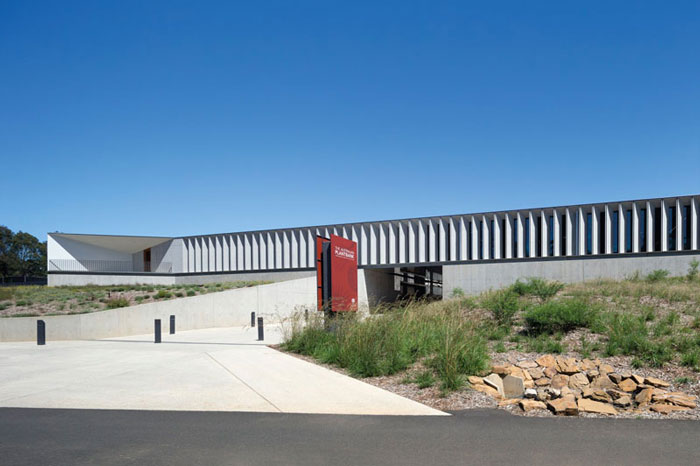
Image © John Gollings
The building also incorporates visitor facilities, such as exhibition rooms, where visitors have the possibility to watch researchers at work and learn more about the current projects.

Image © John Gollings
Upon arrival, visitors are guided through the entry that leads into a tunnel with mirrored ceiling, reflecting the path and everyone inside. The tunnel leads to the lichen garden that uses recycled sandstone blocks from demolished Sydney buildings to host the exotic lichen colonies.
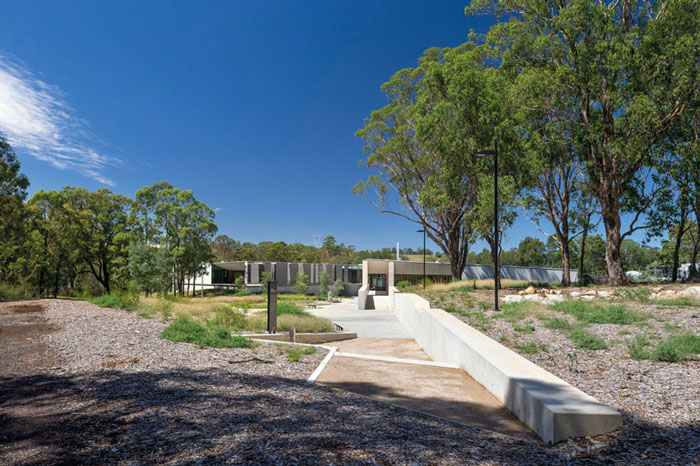
Image © John Gollings
The design project called for a building with dual function. Firstly, the building would become a place for Australian indigenous seeds research, and secondly a facility that would reveal the research through public interpretation and exhibition activities.
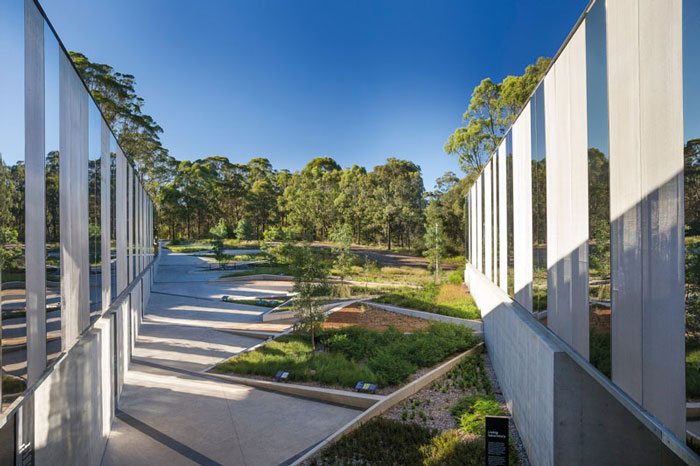
Image © John Gollings
The form of the building was influenced by the natural landscape of the Cumberland Plain Forest to the North. The connection to the landscape is evident throughout. The building has been divided into two separate wings featuring a sunken passageway between the two that leads into the facility.
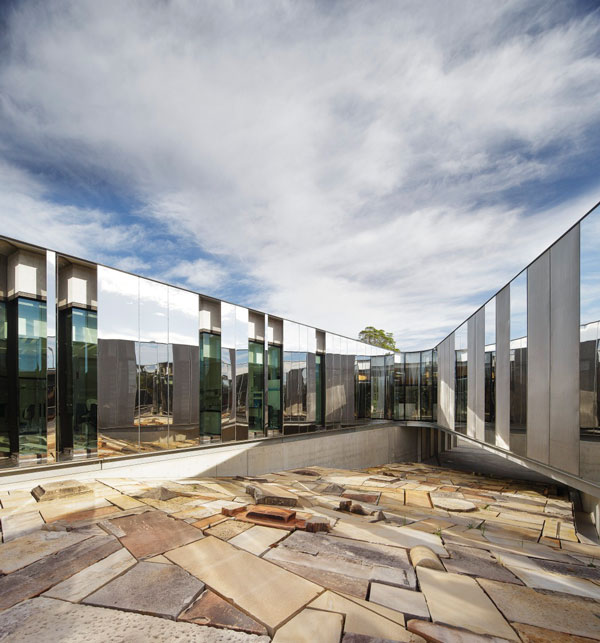
Image © John Gollings
Going under the east wing of the building – nominally passing under the ground – the building curves to the north and merges with the land toward the extant forest. Walking to the front door the visitor engages the interpretive display that connects the external courtyard with the internal research.
– BVN Donovan Hill

Image © John Gollings
The facade of the window features large mirrored panels and windows with operable louvres, enabling mixed mode ventilation sealed by stainless steel bushfire mesh.
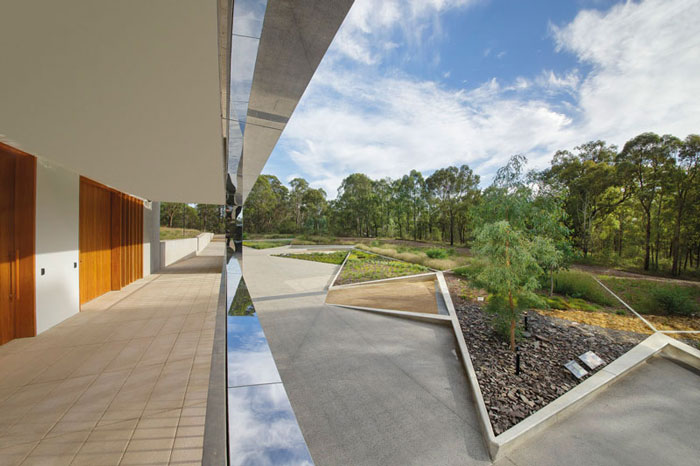
Image © John Gollings
Inside, the visitor path runs along clear glazed laboratories that give the possibility of viewing activities within the labs. Large windows give spectacular views of the surrounding landscape and courtyard.
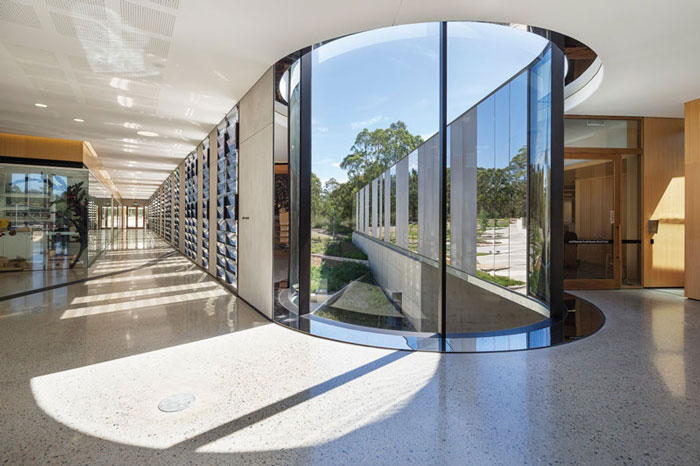
Image © John Gollings
The workplace of the researchers and staff is in a mixed mode environment. Interior finishes have been chosen to articulate the different characters of the building – the laboratories and interpretive areas having visual clarity with the workplaces designed with timber and a softer working environment.
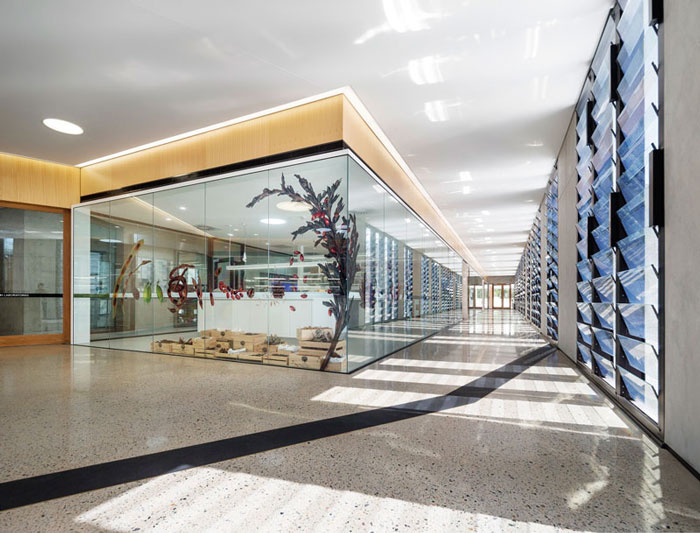
Image © John Gollings
A thermal labyrinth has been installed under the east wing which reduces the HVAC load and extends natural ventilation, particularly during summer when fresh air pre‐cooled overnight circulates and forces out warm air. The system is designed to reduce the peaks and troughs of extreme ambient weather by capturing either the heat of the day or the cool of the night retaining it in the surrounding concrete, earth and rock beds of the constructed labyrinth. The prediction for the assisted warming or cooling of the building is up to 7.5 degrees centigrade.
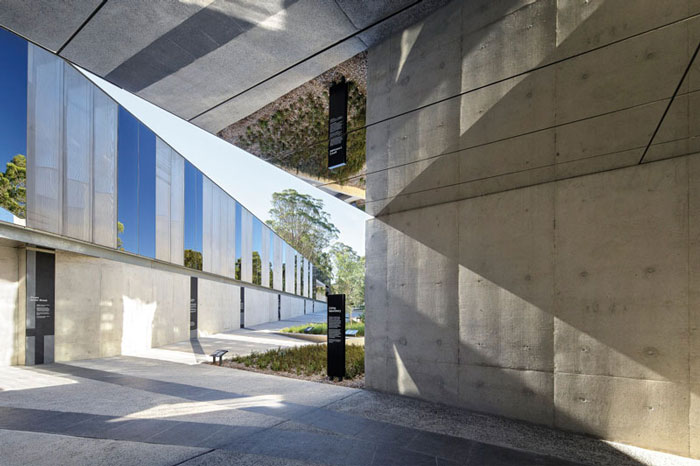
Image © John Gollings
Passive shading is provided to all sun facing surfaces and the concrete floor of the public areas ensures the effect of winter sun is harnessed. Materials of low combustibility have been used to enable bushfire protection and locally sourced renewable resource timber has been used. Water harvesting is employed throughout and gas boosted solar hot water is located on the roof.
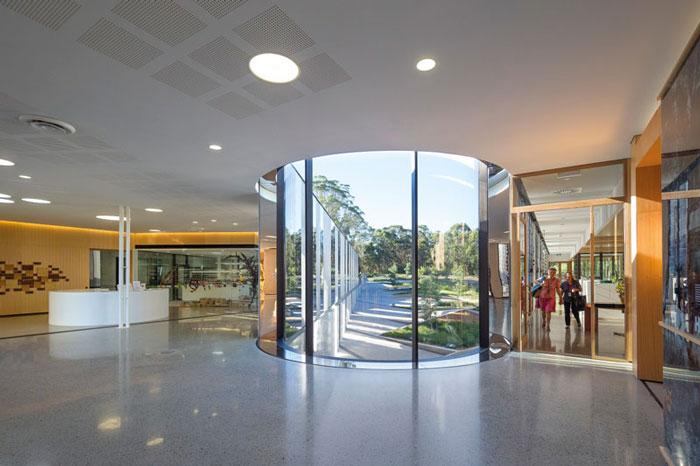
Image © John Gollings
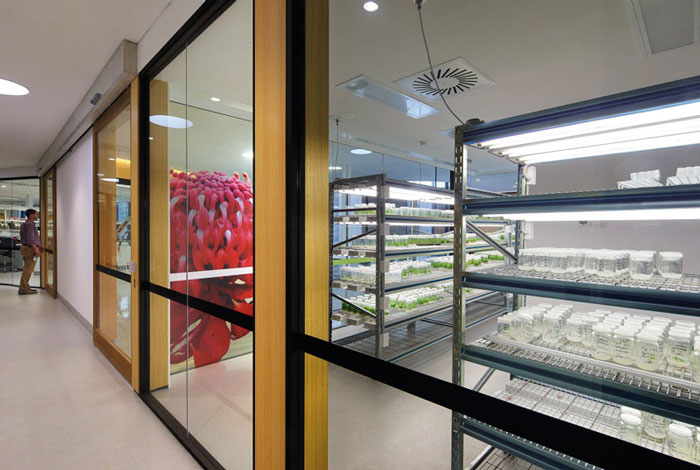
Image © John Gollings
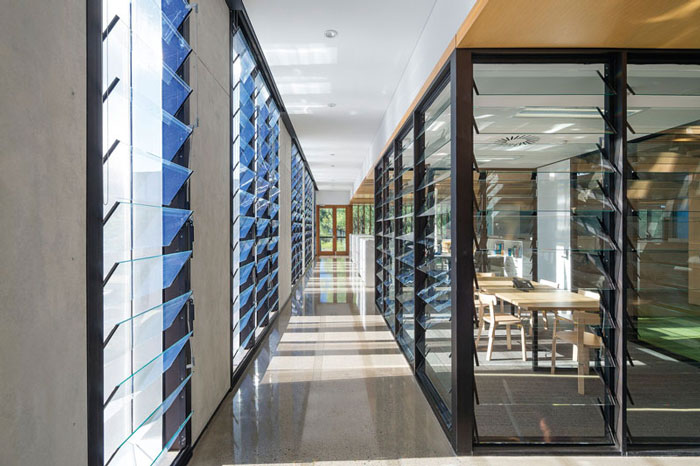
Image © John Gollings
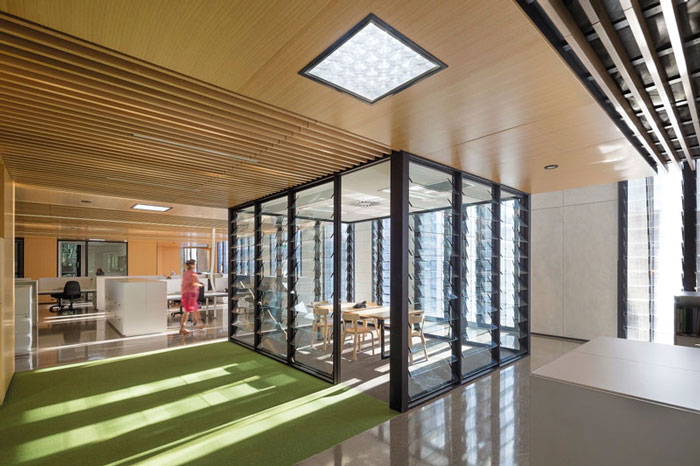
Image © John Gollings

Image © BVN Donovan Hill

Image © BVN Donovan Hill
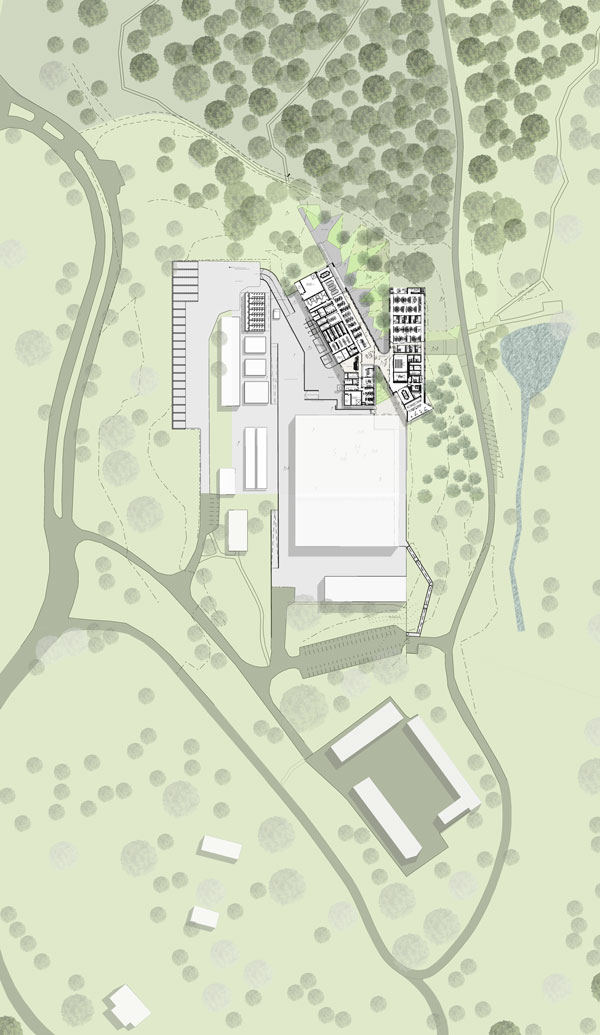
Image © BVN Donovan Hill
Architects: BVN Donovan Hill
Location: Mount Annan, NSW, Australia
Architect In Charge: Alex Chaston
Project Director: Peter Titmuss
Project Principal: James Grose
Year: 2013
Photographs: John Gollings
*All images and information courtesy of World Architecture Festival.
